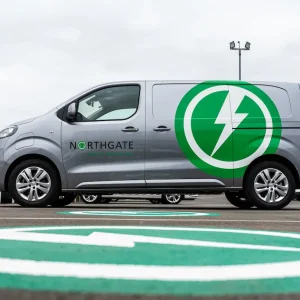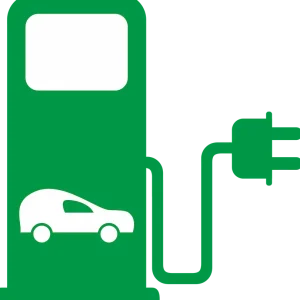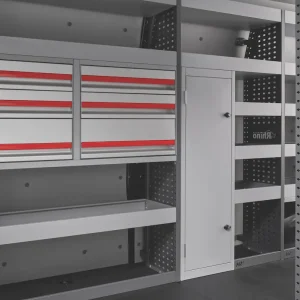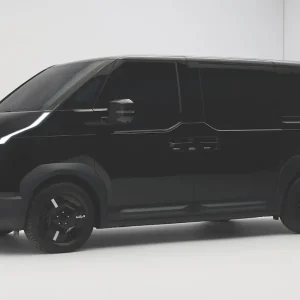Traditionally, the London Low Emission Zone has been the concern of heavy vehicle operators, and left van fleets blissfully alone.
The capital is so far the only UK city to operate such a scheme and, save for the well-established Congestion Charge for its innermost area – and the £10 T-Charge introduced for older vehicles in October 2017 – LCVs have had a comparatively easy ride on standard-issue, inner-city penalties.
Fare-free urban van operation is on borrowed time, though, as local and national authorities are set to crack down on air-quality issues over the next three years.
Come 8 April 2019, the Ultra-Low Emissions Zone (ULEZ) will take effect within the existing Congestion Charging area, replacing the T-Charge, which relates to only pre-Euro4 emissions standard vehicles.
The ULEZ will ramp that up to Euro6 for diesel vehicles (Euro4 remains for petrols), operate 24/7 and hike the charge to £12.50. On 8 June, mayor Sadiq Khan announced that it will
fan out to cover the area from the North to the South Circular roads from 25 October 2021.
As if that weren’t enough, five other UK cities – Birmingham, Nottingham, Derby, Leeds and Southampton – have been mandated to introduce their own low-emission or clean-air zones with similar financial penalties by 2020, while others are mulling comparable initiatives.
Full details of each have yet to be made clear, but suffice to say, van fleets working anywhere near major urban areas are looking at a serious rise in costs and admin during the next three years, unless they can adapt their operations.
Apart from keeping abreast of the details (a job in itself), telematics is among the best ways of tackling the barrage of impending low-emission zones (LEZs). If your fleet is already kitted out with the technology, then there are a number of ways to exploit it, the most immediate of which is by setting up mock geofences that emulate future LEZs.
Effectively a dry run before the real things kick in, such a practice will help fleets to establish their exposure to impending charges before they actually happen, which then allows time for a rethink about which vehicles are used where.
“Before all of these zones come in, you can be using the telematics data to give you an advantage,” says Mike Hemming, UK Catalytix director at telematics firm Masternaut. “If you look at the data now, you know which vehicles are going to cause you a problem in terms of entering the zone because they’re not efficient enough and they produce too much CO2 and other emissions. We’ve actually started helping people to look at that, saying ‘vehicle X visits eight times a week and you spend this amount of time there, so your cost would have been this’.
“Operators can look at how they redistribute their fleet so they’ve got the more efficient vehicles using those zones – and what their purchasing strategy is going to have to be, so they make sure they’re not paying over and above to use those areas.”
Clever though it sounds, that’s hardly revolutionary as far as the actual technology is concerned. Telematics specialists are more than used to gearing their systems to accommodate different geographical requirements, so throwing in an LEZ or two is no great shakes.
“We see it in place today with things like the M6 toll: does your employer support you driving on the M6 toll or do you need to go down the A38?” says Stephen Watson, director of product at Microlise. “People who use toll routes along the Severn Bridge into Wales are a good example; they use vehicles that are kitted out with the electronic e-tag system, so the vehicle doesn’t have to stop, and they know to use those vehicles on those routes.
“What telematics will allow you to do is build polygons, or geofences, so you can encapsulate the extent of any particular area. You can say ‘this zone is in play between these hours on these days’ so it doesn’t have to be all or nothing… and you can set it to certain types of vehicle, so you can build up profiles and, basically, the system will tell you when a vehicle enters one of these zones, how long it spends in that zone, where in that zone it goes and at what point in time it leaves.”

Use telematics to keep higher-polluting vans out of city centres that will penalise them
The snag concerning the yet-to-be-defined LEZs outside of London is a lack of information.
The capital’s Congestion Charging zone and well-defined North and South Circular roads make for easy viewing, but according to Hemming, crucial geographical details have been “very patchy” for the other five cities.
Though it won’t be difficult for telematics providers to tweak their mapping when the definition appears, they are forced to make do with what he describes as a “best guess” until then, basing their assumptions on the location of major arterial and ring roads, which are expected, but not guaranteed, to form the borders.
As enforcement of such zones grows closer, operators should use any data they can glean to redistribute their vehicles and rejig their routes. Most fleets of any size are likely to have a mixture of LCVs, and engineering deployment so that the newest, most efficient models are tackling the inner-city work will pay for itself.
“Make sure you know which vans are going to have a problem if they go into the low-emission zone,” says Beverly Wise, sales director at TomTom Telematics. “It’s then about re-assigning those, maybe to another depot that doesn’t have a low-emissions zone within their service area, and making sure that you get the lowest-possible-emission vans to operate in that area.
“Look at the routes that people are taking and try to force a route onto the system that stops them having to go into that zone by accident. People might say ‘I’m just going to pop down this road because it’ll save me time’, and that road could well be in the low-emissions zone and you could be in it before you know it. I would put geofencing on to make sure that you are alerted when people go in [before the zones are active], so you can re-educate your drivers to avoid it.”
No choice
As much as it makes sense to avoid LEZs altogether, some businesses will inevitably have to enter them. If all of your vans are Euro6 or electric then it won’t be a problem, but that likely applies to a select few, rather than the majority. The thing to do is plan accordingly, and make every conceivable adjustment based on the available telematics data.
“You’re not going to be able to stop vehicles travelling in there per se, because they’re doing a job – whether it’s servicing a lift or delivering a fridge to a restaurant – and you’re not going to be able to carry a fridge on a bus,” says Hemming.
“It’s about using the data that you’ve got available to see how you’re going to maximise your operation in those areas. It could be that, for example, you base your operation outside of the low-emission zone and then you only have specialist vehicles operating within the low-emissions zone.”
“In some situations, it’s impossible [to avoid LEZs] because that’s where they’re going to deliver,” adds Wise. “So it’s about trying to minimise the number of vehicles or optimising that delivery vehicle to make sure it is the only one going into that zone.
“What you don’t want are four high carbon-emitting vehicles going into the same zone to make four deliveries.
“If you can optimise your routes to make sure that you’ve only got one vehicle going in to do those drops, you’re therefore reducing what it’s going to cost you as much as possible.”





